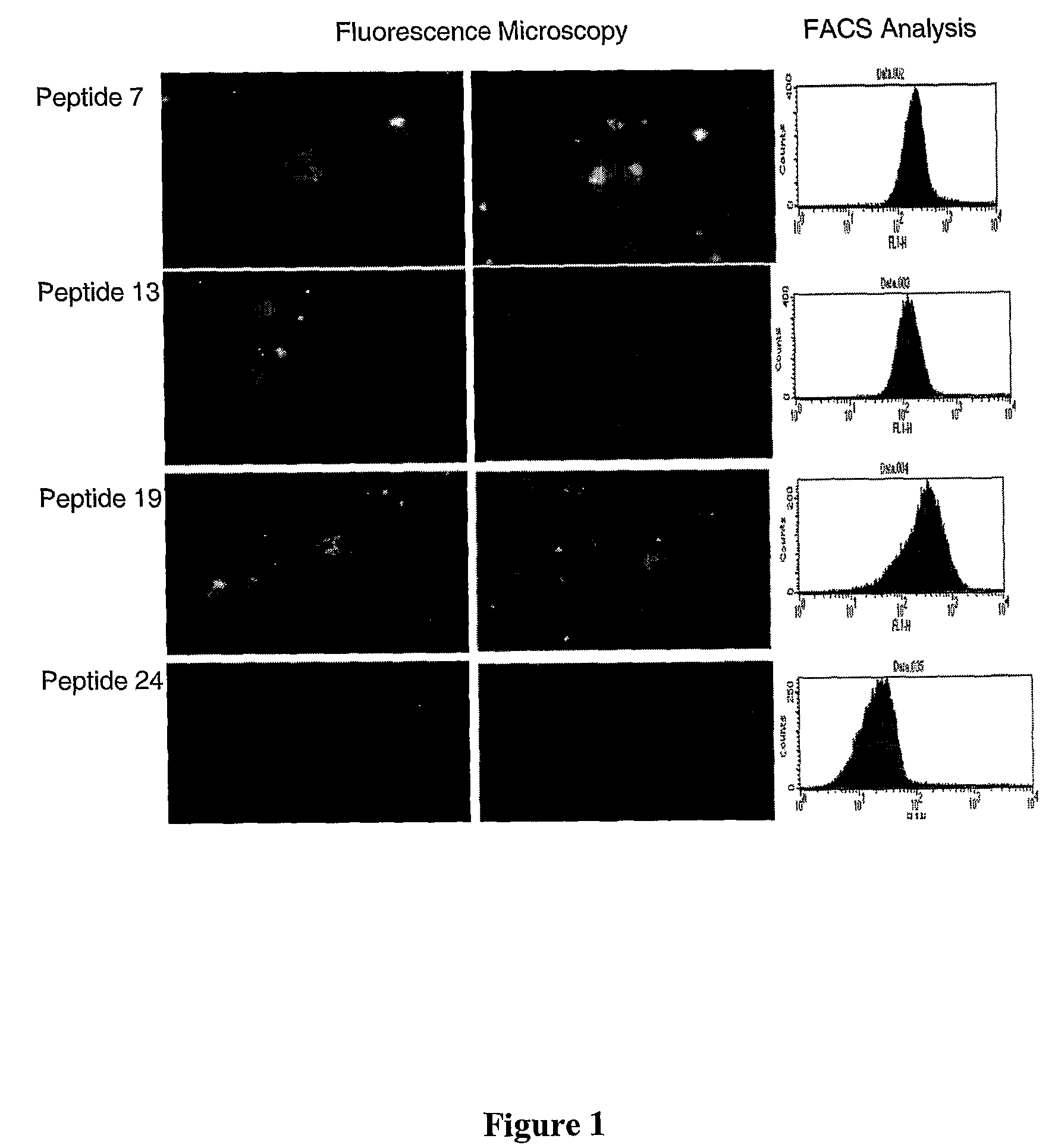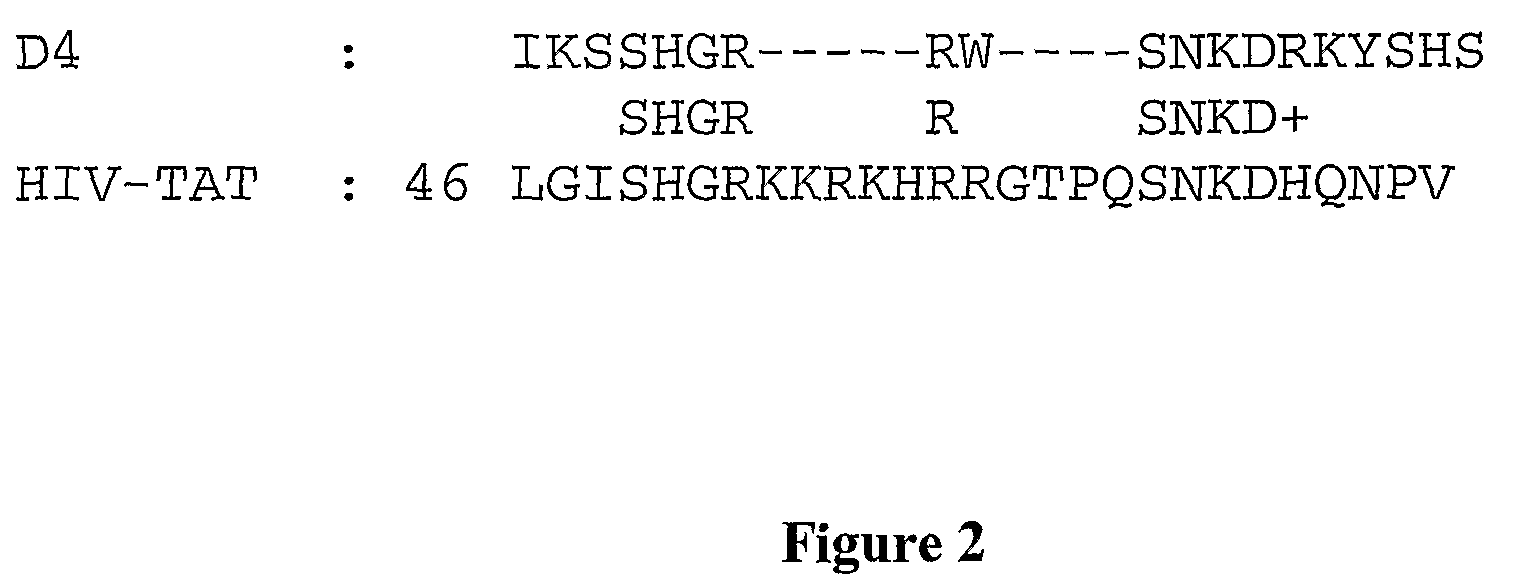Membrane-translocating peptides
a technology of peptides and peptides, applied in the field of membrane-translocation peptides, can solve the problems of limited size of libraries that can be generated with both phage display and chemical synthesis, low affinity isolation of peptides, and delivery of translocation peptides, and achieve the effect of easy cleavag
- Summary
- Abstract
- Description
- Claims
- Application Information
AI Technical Summary
Benefits of technology
Problems solved by technology
Method used
Image
Examples
example 1
(i) Construction of a Cis Display Library for Selection of MTPs
[0077]Library construction and in vitro transcription and translation were carried out as described by Odegrip et al. (2004, Proc. Natl. Acad. Sci. USA, 101 2806-2810).
[0078]The tac-NNB-RepA-CIS-ori PCR construct was prepared by appending an 18-mer NNB library (where N is any nucleotide and B is either C, T or G) to the tac promoter by PCR and then ligating it to the RepA-CIS-ori region followed by PCR amplification.
(ii) Selection of Cell Membrane-Translocation Competent Peptides
[0079]In vitro transcription and translation was performed with 2 μg of library DNA in an E. coli S-30 lysate system for up to 30 minutes at 30° C. and then diluted with blocking buffer (1% BSA in PBS). Typically, 2 μg of linear DNA was added per 50 μl of S-30 lysate. The expressed library was added to 5 μl of PBS washed human red blood cells (RBC) and incubated on ice for 30 minutes. RBC were centrifuged at 2000 rpm for 5 min and supernatant rem...
example 2
(i) Construction of a Cis Display Library for Selection of MTPs
[0092]The following example describes the selection of MTPs that are capable of crossing or penetrating synthetic lipid membranes. Library construction and in vitro transcription and translation are carried out as described in Example 1 above.
(ii) Selection of Synthetic Membrane-Translocation Competent Peptides
[0093]In vitro transcription and translation are performed as described in Example 1 above.
[0094]Emulsions of artificial oil compartments are made by slowly adding 50 μl PBS (in 10 μl aliquots) to 0.5 ml ice cold 0.5% Triton X-100 and 4.5% Span 80 (sorbitane trioleate) in light mineral oil on ice stirred at 1600 r.p.m. for 5 minutes. The emulsion mix is then spun at 3000 g for 5 minutes and the oil phase removed to leave the emulsion at the bottom of the tube. The in vitro transcription and translation mix is then added to the emulsion mix in 1 ml PBS and mixed by gently inverting five times and incubating on ice f...
PUM
| Property | Measurement | Unit |
|---|---|---|
| specific density | aaaaa | aaaaa |
| length | aaaaa | aaaaa |
| aliphatic | aaaaa | aaaaa |
Abstract
Description
Claims
Application Information
 Login to View More
Login to View More - R&D
- Intellectual Property
- Life Sciences
- Materials
- Tech Scout
- Unparalleled Data Quality
- Higher Quality Content
- 60% Fewer Hallucinations
Browse by: Latest US Patents, China's latest patents, Technical Efficacy Thesaurus, Application Domain, Technology Topic, Popular Technical Reports.
© 2025 PatSnap. All rights reserved.Legal|Privacy policy|Modern Slavery Act Transparency Statement|Sitemap|About US| Contact US: help@patsnap.com


